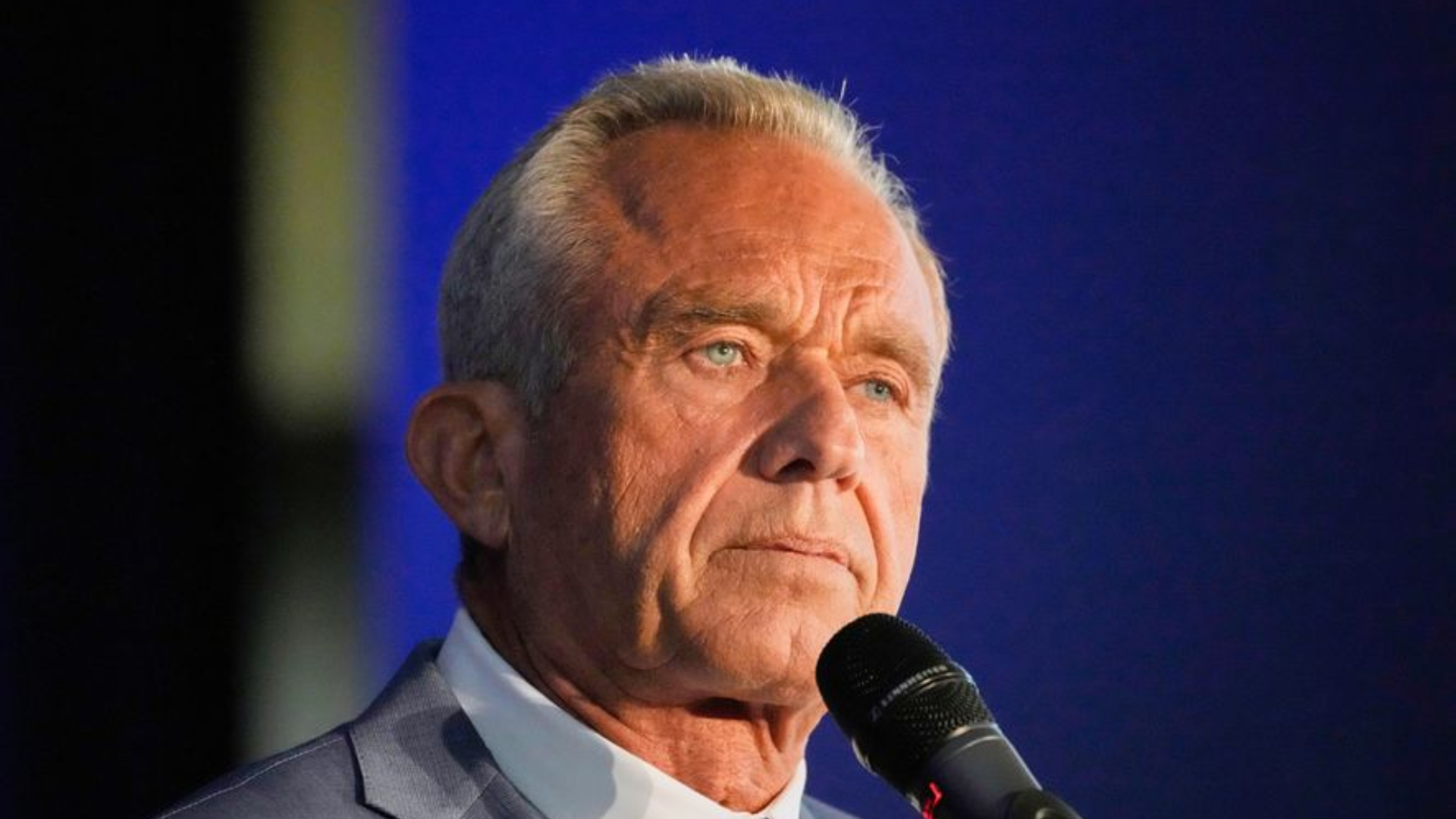WILMINGTON, Del. — President Donald Trump and challenger Joe Biden focused their presidential battle on the wildfire-scorched West Coast Monday, with Trump meeting fire officials in California while Biden declared the fires and recent extreme weather underscore an urgent need to address climate change.
The dueling events marked a stark moment on the campaign trail, where the two candidates’ dramatically contrasting outlooks on climate change —and the impact it has had on the record-setting fires ravaging California, Oregon and Washington state —were front-and-center.
Biden lashed at Trump, saying the moment requires “leadership, not scapegoating” and that “it’s clear we are not safe in Donald Trump’s America.”
“This is another crisis, another crisis he won’t take responsibility for,” Biden said. “If you give a climate denier four more years in the White House, why would we be surprised that we have more America ablaze?”
Trump, who will be briefed during a stop near Sacramento before a campaign visit to Phoenix, has been mostly quiet as the catastrophe on the West Coast has unfolded over the past few weeks. He tweeted appreciation of firefighters and emergency responders on Friday, the first pubic comments he had made in weeks about the fires that have killed at least 33, burned millions of acres and forced thousands from their homes on the West Coast.
When he has weighed in on the fires, it has been mostly to blast Western Democratic leaders, making the claim that poor forest management is to blame for the fires that have created a hellscape in big swaths of the West.
At his campaign rally in Nevada Sunday, Trump contended anew that Democratic state leaders are to blame for failing to rake leaves and clear dead timber from forest floors. However, many of the blazes have roared through coastal chaparral and grasslands, not forest.
As he was campaigning, he also offered condolences to those impacted.
“We are with them all the way!” Trump tweeted, noting his administration has approved additional federal and other resources to fight the fires.
The disaster and new national attention on climate change could be creating another difficult moment for a president facing multiple challenges, including the coronavirus pandemic, joblessness and social unrest. Trump has repeatedly discounted the impact of climate change, walked away from a major international climate agreement and proudly rolled back environmental regulations.
University of Colorado fire scientist Jennifer Balch called Trump’s deflecting blame on forest managers “infuriating.”
“It’s often hard to know what Trump means,” Balch added. “If by forest management he means clear-cutting, that’s absolutely the wrong solution to this problem. … There’s no way we’re going to log our way out of this fire problem.”
Biden, who gave his climate speech in Delaware on Monday, released a $2 trillion plan in July to boost investment in clean energy and stop all climate-damaging emissions from U.S. power plants by 2035.
But as the wildfires rage, some climate activists have expressed frustration that Biden has not been more forceful on the issue. He has not embraced, for instance, some of the most progressive elements of the Green New Deal.
Amid that disapproval from the left, Biden over the weekend offered his most pointed criticism connecting Trump’s climate change denialism to the fires.
“The science is clear, and deadly signs like these are unmistakable — climate change poses an imminent, existential threat to our way of life,” Biden said in a statement. “President Trump can try to deny that reality, but the facts are undeniable. We absolutely must act now to avoid a future defined by an unending barrage of tragedies like the one American families are enduring across the West today.”
Trump will visit McClellan Park, a former U.S. Air Force Base about 10 miles outside of Sacramento that is used by firefighters as a staging area for large aircraft used in combating blazes. Most of the largest firefighting aircraft have not been utilized in recent days due to heavy smoke limiting visibility.
Biden’s running mate, California Sen. Kamala Harris, will return to her home state on Tuesday to meet with emergency service personnel to be briefed on the state’s wildfires.
In 2015, Trump stated bluntly: “I’m not a believer in global warming, I’m not a believer in man-made global warming.” After the publication of the Intergovernmental Panel on Climate Change report concluded climate change would hurt the economy, Trump said he read it but didn’t believe it. In September 2019, he falsely slammed the Green New Deal as an effort that would lead to “No more cows. No more planes … no more people, right?”
Climate scientists say rising heat and worsening droughts in California consistent with climate change have expanded what had been the state’s autumn wildfire season to year-round, sparking bigger, deadlier and more frequent fires.
All five of the state’s largest fires in history have raged in the past three years, as well as the deadliest fire, a 2018 blaze that killed 85 people when it swept through the town of Paradise on the slopes of the Sierra Nevada.
An analysis out in August from Stanford climate and wildfire researcher Michael Goss and others found that a nearly 2-degree (1 Celsius) rise in autumn temperatures and 30 percent drop in rainfall has more than doubled the number of autumn days with extreme fire weather over the past 40 years. Confronting the worsening conditions of climate change, and the still more dangerous conditions to come, has “critical relevance for ongoing efforts to manage wildfire risks in California and other regions,” the researchers wrote.
All five of the state’s hottest days on record have struck since 2014, overlapping one of the state’s worst droughts on record.
Copyright 2020 The Associated Press. All Rights Reserved. This material may not be published, broadcast, rewritten, or redistributed. PHOTO: AP





















